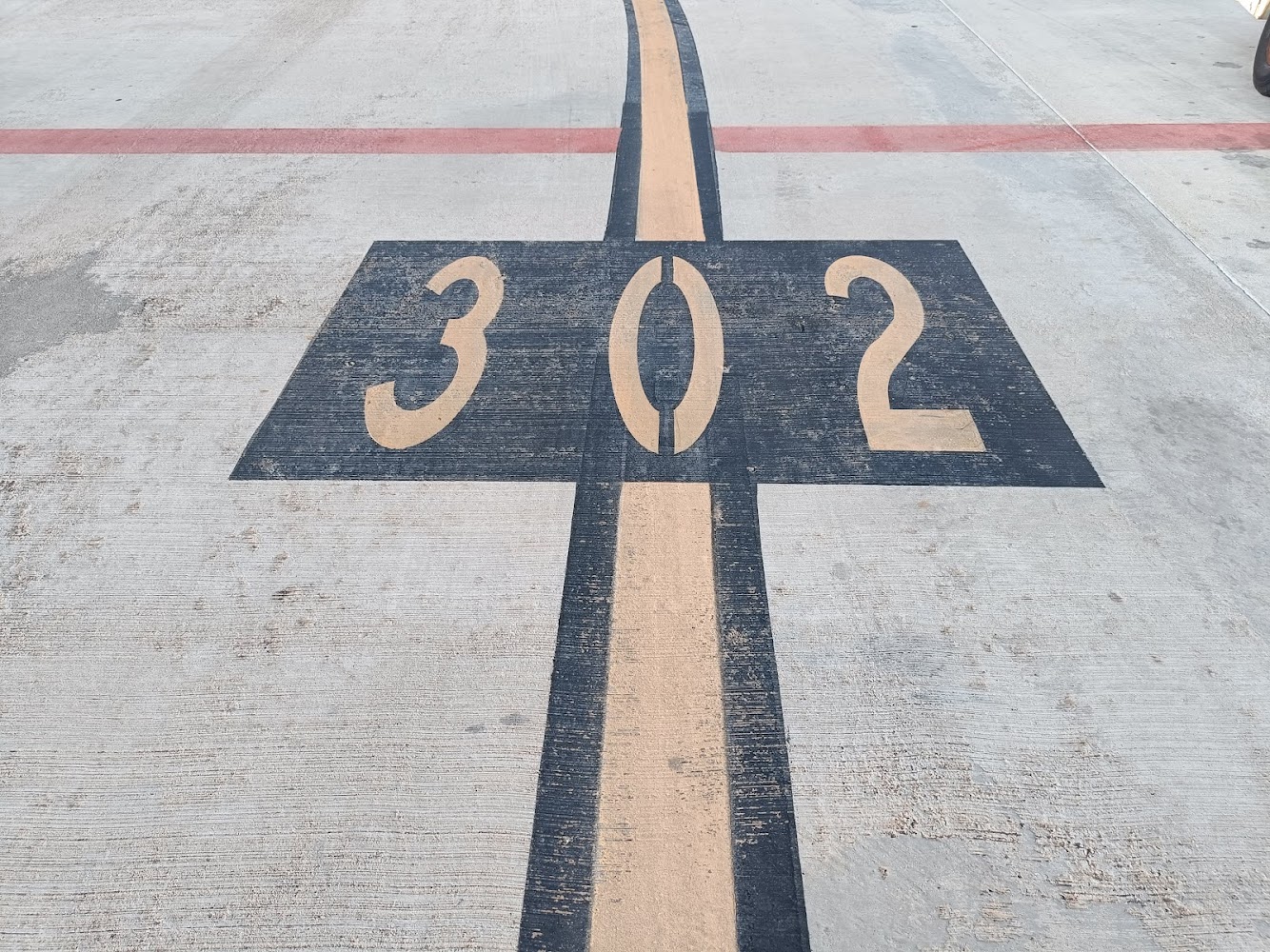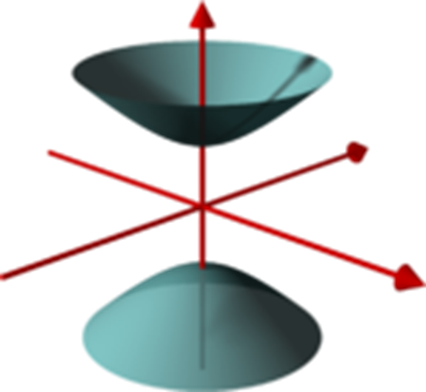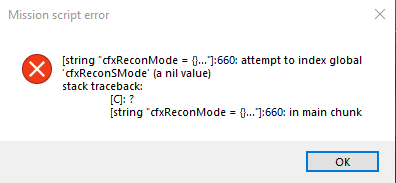-
Posts
333 -
Joined
-
Last visited
Content Type
Profiles
Forums
Events
Everything posted by Sinclair_76
-
You could've left your trim in DISC during the start up. That would explain both issues.
-

correct as-is my noob f16 problem, datalink and landing
Sinclair_76 replied to Suffer_Player's topic in DCS: F-16C Viper
Iirc for a repair you have to completely shutdown the aircraft. After that you need to do a full IRS realignment (the 8 minute one). Don't forget to enter the lat as well as the long. Default values are fine. -
Congratulations to me.... Woke up my family laughing...
-
@IR.Clutch How does the INS error show? What do you intend to demonstrate with the red arrow in your description?
-
No, works fine for me. But the JTAC supplies me with 8 digit MGRS with an 100k square identifier. It omits the gridzone designator though. Ie Nevada is 11S (which never gets mentioned) NB 1234 5678. You enter everything as is. Don't bother adding the extra zeros it accepts 8 digits, it's not that ghetto. What sometimes happens is that the grid leads with a easting zero. DCS omits that zero in the teadback and you get a 7 digit grid. That's the only time I will add zero's in the while entering MGRS coordinates.
-
That could be very well be but in that case it should also work with 2x receivers imo, just need extra time to compensate.
-
I don't consider BN's reply a real answer. He only stated documents reference they need 3x emitters. I asked for a reason why. Of course it's possible he can't give a reason, which is fine. At least three receivers is neither fish nor fowl. A true TDOA solution requires 4x receivers (=3x TDOA). If a solution only requires 3x receivers, my bet is the system uses a Kalman filter to get a fused location using ,3x receiver TDOA ( a curve) and multiple triangulation ellipses (the location is where the curve touches the ellipse or DTED as suggested by @toilet2000). But then this system would also work with 2x receivers (the location is where the hyperboloid touches the ellipse, if there is overlap there is a significant reduction of the area where the true location is at). The beauty of a full TDOA location it's that it is near instant high accuracy. Any location fusion with less than 4x receivers just requires (a lot of?) more time to get proper measurements and have the Kalman filter come up with a precise location. or ED interpreted the 3x TDOA as 3x receivers.
-
The solution provided does not answer my question and is incorrect. TL;DR There are multiple variations on solving emitter locations with multilateration. In this case KlarSnow conflates 3d true-range multilateration, in the text and 2d TDOA/ pseudo-range multilateration with the visual example (both 3 receivers). But the problem in localizing a hostile emitter in DCS is a 3d TDOA (not a true-range 3d or a pseudo-range 2d) problem which according to the formula for pseudo-range multilateration, m≥d+1 (m=receivers, d=dimensions) requires at least (3+1=) 4 receivers. Hence my question; how does ED solve the 3d TDOA problem with 3 HTS equipped Vipers when technically 4 receivers are required? Now for my lengthy/nerdy explanation. Multilateration is difficult subject. To begin there are two distinct problem sets. Multilateration with known ranges, true-range multilateration, with unknown or biased ranges, known as pseudo-range multilateration. True-range multilateration can be done with radars for example. With just range 2 emitters can locate a target in a 2d situation. With 3 emitters a target can be defined in a 3d environment. With the HTS and passive equipment in general, ranges cannot easily be obtained. Time Differences of Arrival (TDOA) can be used to overcome the ranging problem. TDOA is typical for pseudo-range multilateration. The formula used to determine the amount of receivers to determine the location of the emitter is: m≥d+1 (d are the amount of dimensions being dealt with, and m the amount of receivers). To put it simply a TDOA solution in a 2d environment requires 3 receivers and a 3d environment requires 4 receivers. In passive equipment (yes there are exceptions but only in a cooperative environment) a single station, when receiving an emission, can only establish that an emitter exists. It can’t determine range or location for that matter (by using directional antenna’s you would be able to determine direction). A single TDOA requires at least two Times of Arrival (TOA). In other words, a single TDOA requires a minimum of two receivers. With a single TDOA a pseudo range can be determined which can be plotted on a half of a 2-sheeted hyperboloid (either the top or bottom in the picture). Adding a third receiver adds a second TDOA and hyperboloid. The location of the emitter in this case is on the curve (in red in the picture below) that intersects two hyperboloids. Adding a fourth receiver will have the previous curve intersect with the hyperboloid on a single point (most of the time as I understand it but apparently it sometimes can intersect in two points. I might be wrong here as I don’t fully understand this part). The point is the location of the emitter. With the visual examples as well as the formula I hope to demonstrate that locating an emitter with TDOA in a 3d situation requires 4 receivers. In the video by Matt, it is mentioned that at least 3 Vipers with HTS pods are required. To come back to my original question; how does ED tackle the TDOA equation with only 3 receivers? In the above quoted part it’s clear that KlarSnow is referring to 3d true-range multilateration and not pseudo-range multilateration. The picture provided references a 2d (on a single plane) TDOA which also only requires (2+1=) 3 receivers. The TDOA problem in DCS is a 3d pseudo-range multilateration so both the written as well as graphic representation provided in the solution don't apply. Further reading: https://en.wikipedia.org/wiki/Trilateration https://en.wikipedia.org/wiki/Pseudo-range_multilateration Graphics: https://en.wikipedia.org/wiki/Hyperboloid https://math.stackexchange.com/questions/2629499/intersection-between-two-hyperboloids https://math.stackexchange.com/questions/3379193/intersections-of-3-hyperboloids
-
In the recent ED Matt video of the HTS improvement, it was mentioned you need at least 3x Vipers to get a TDOA solution. What is the reason for that? Edit: my mistake report in bugs wasn't intended. Please move to general.
-

DML - Mission Creation Toolbox [no Lua required]
Sinclair_76 replied to cfrag's topic in Scripting Tips, Tricks & Issues
Might I suggest another improvement? The effects themselves are all the same. n Sure after fireFx in the zone description you can enter the required size. Would it be possible to enter "r" or "rnd" in the description so that DML then randomizes effects (fire / smoke), effect sizes (S/M/L/XL) and smoke density? To develop it further combine it with spot zone destruction. So you have randomized smoke/fire and combine it with say 60% (user changeable) of the objects at the fire/smoke destroyed? This would quickly add a lot of grittiness to scenario's that is randomized. -

DML - Mission Creation Toolbox [no Lua required]
Sinclair_76 replied to cfrag's topic in Scripting Tips, Tricks & Issues
Is there a way to randomize the position of FireFX in a zone? -

DML - Mission Creation Toolbox [no Lua required]
Sinclair_76 replied to cfrag's topic in Scripting Tips, Tricks & Issues
My bad. I forgot the reconModeConfig. It is properly mentioned in the DML Documentation but not really in the DML Quick Reference. -

DML - Mission Creation Toolbox [no Lua required]
Sinclair_76 replied to cfrag's topic in Scripting Tips, Tricks & Issues
Yup latest versions and imperial as well as mgrs to true. -

DML - Mission Creation Toolbox [no Lua required]
Sinclair_76 replied to cfrag's topic in Scripting Tips, Tricks & Issues
cfxReconMode still returns altitude in meters and latlong even when MGRS and imperial is set to true. Is there a way to change it? -

correct as-is HAD - problems locking emitters also in Caucasus
Sinclair_76 replied to Sinclair_76's topic in Bugs and Problems
Ahh there is a whole new logic to it. Makes sense now. What also changed is the behavior of the HAD designation. You used to be able to SOI the TGP and move it around without losing the HAD designation when SOI-ing the HAD again. Now it loses the designation the moment you move the TGP. Switching fov, either way, or changing sensor type holds the HAD designation. -
I was one of the original (for lack of a better word) complainers of the lack of precision of the GBU-38. I also suggested and referenced the CEP of the GBU-38 being 5m. First of all the CEP: This means that a miss of 10 meters is as likely as a direct hit. That is still pretty huge. The first iterations of the JDAM (at least just prior 2003) weren't even considered precision but near precision weapons. They are not as precise as LGB's which have a CEP of 1.1m. With the lack of splash damage in DCS I wouldn't consider GPS/INS guided munition suitable for hard targets, the -108 being the exception . In the complaint/bug finding in the beginning of this year I tested it on soft skin vehicles (BTR-80's) and 4 out of 4 survived. Just now did a similar test with 3x BTR-80's and none survived (3x K-kill) with pretty much 2 of 3 direct hits. To further develop the test I used T-55 in stead of BTR's and now 2 out of 3 were K-kills (tested it 3x with the same results). All in all the GBU-38 seems to work as advertised. I did use the 3 second lase before designating (TMS up) to get a precise coordinate hand-off. Test-GBU38.mizTest-TOO-GBU-38.trkTest-TOO-GBU-38-t55.trk
-

How often does an Apache hover on the battlefield?
Sinclair_76 replied to The_Chugster's topic in DCS: AH-64D
Depends on the situation. In a regular warfare situation with a linear battlefield and advanced SA threat. Static and low is the way to go. Low chance of encountering enemy tanks and infantry on your own side of the FLOT. Non linear battlefield and advanced threat calls for dynamic low. Everything else for dynamic high. -
Just enter 8 digits, system can handle that.
-
The DED is smart enough that it knows to do when you enter an eight digit grid. In other words you can skip the easting and northing 0's.
-

DML - Mission Creation Toolbox [no Lua required]
Sinclair_76 replied to cfrag's topic in Scripting Tips, Tricks & Issues
Thank you so much! -

DML - Mission Creation Toolbox [no Lua required]
Sinclair_76 replied to cfrag's topic in Scripting Tips, Tricks & Issues
@cfrag Regarding stopGap, awesome module btw. When populating a stopgapped plane in a group of 4 the other 3 planes will not reappear as statics but remain empty. Is it possible to have the not client populated planes within a group te appear? Or is there a spelling mistake in the manual... -

DML - Mission Creation Toolbox [no Lua required]
Sinclair_76 replied to cfrag's topic in Scripting Tips, Tricks & Issues
It's been a while. But In a older mission which I upgraded with the latest DML modules, this error popped up.









